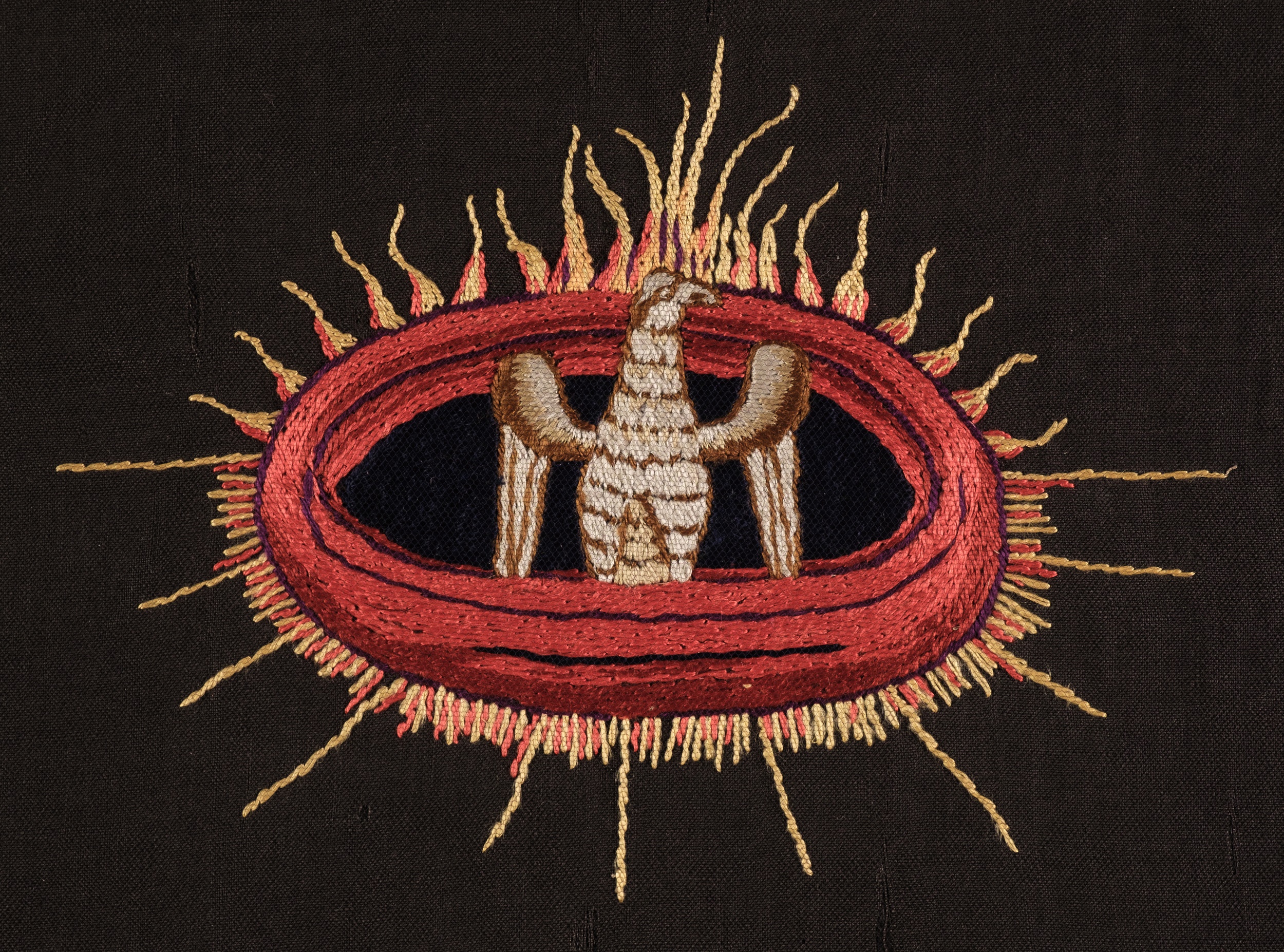Auction Preview: The Collection of Lady Ottoline Morrell
A Collection of Textile Treasures from the Collection of Lady Ottoline Morrell (1873-1938) – A Life of Eccentric Elegance
A patron of the arts and an iconic symbol of rebellion in 20th-century England, Lady Ottoline Morrell’s distinctive style was as unforgettable as her presence in the cultural lives of luminaries such as D.H. Lawrence, T.S. Eliot and Virginia Woolf.
Dominic Winter Auctioneers is pleased to present a collection of textiles from the personal possessions of Lady Morrell at our auction on the 13th of March 2025, offering a rare glimpse into her extraordinary life of aristocratic glamour, and intimate connection with some of the world’s most celebrated literary figures.
From her own private collection and thence by descent, highlights include a remarkable needlework panel embroidered by Lady Ottoline Morrell herself, densely worked in bright polychrome silk threads with a profusion of large decorative flowers, which she created during the heady days of the First World War, when her beautiful Cotswold home, Garsington Manor became a refuge for conscientious objectors including Bertrand Russell, D. H. Lawrence and many others.
A needlework panel embroidered by D.H. Lawrence & Frieda Lawrence for Lady Ottoline Morrell will be up for sale, worked in coloured silk threads with a handwritten note by Lady Morrell 'Worked for me by D.H. Lawrence & his wife Frieda. 1916'. Lady Morrell secured an introduction to D.H. Lawrence from a mutual friend just a year before this panel was gifted to her. The author became a great friend and a frequent visitor to Garsington.

Ottoline, unconventional in so much of her life, was idiosyncratic in her style of dress. Not only did she have eclectic taste, but this collection shows her appreciation of fine silks, rich embroideries and skillful needlework. A collection of purses will also be available including a most unusual early 18th century lute-shaped purse, possibly a sweete bag for herbs, as well as a selection of Morrell’s most treasured painted and embroidered boxes, some purchased on her travels to the continent.
The full catalogue will be available on the 1st of March 2025.
